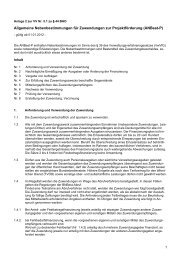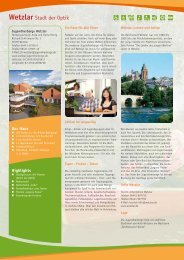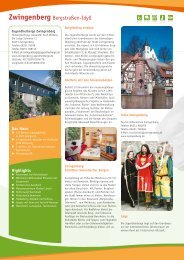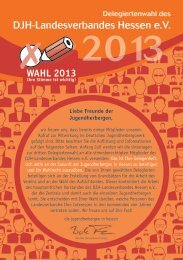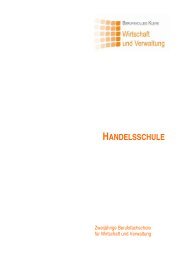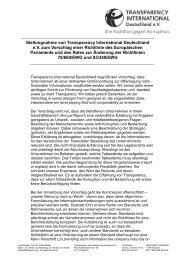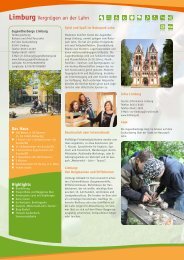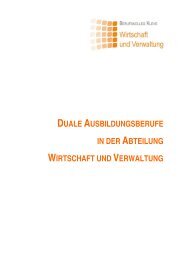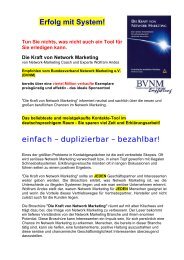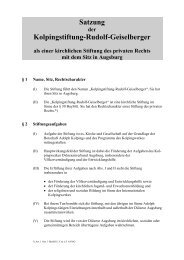REPA Booklet - Stop Epa
REPA Booklet - Stop Epa
REPA Booklet - Stop Epa
You also want an ePaper? Increase the reach of your titles
YUMPU automatically turns print PDFs into web optimized ePapers that Google loves.
28<br />
(No) Goods<br />
What might a Pacific Economic Partnership Agreement mean for the Pacific Islands?<br />
In the traditional sense of trade in goods, the main concern is to protect the preferential access of Fiji for sugar<br />
and PNG and the Solomon Islands for canned tuna. An open door for European products would not have a<br />
very significant effect because the amount of trade with Europe is relatively small. . Agreements on services,<br />
investment, competition and other ‘trade-related’ topics would have a much greater impact, mainly by closing the<br />
policy choices available to Pacific Islands governments and opening them to sanctions if they tried to retreat from<br />
the neoliberal agenda.<br />
“I am convinced that<br />
trade, and more<br />
specifically EPAs, are<br />
crucial tools in our<br />
drive for global<br />
prosperity and for<br />
social justice.”<br />
(Peter Mandelson, EU<br />
Trade Commissioner,<br />
December 2004)<br />
What might an agreement on trade in goods provide?<br />
Relying on the Commission’s promise of flexibility, asymmetry and special and differential treatment, the Pacific<br />
Islands are likely to seek full access for all exports from any Island that signs an agreement on goods, free from<br />
duties and quotas, with less rigid Rules of Origin than exist now. In return, they would guarantee the access for<br />
a less extensive range of products from the EU over long transition periods. They will also want financial<br />
assistance with the ‘adjustment’ costs, including fiscal reform to compensate for the loss of tariff revenue.<br />
Who are the Islands’ main exporters of goods to Europe?<br />
The level and source of trade in goods fluctuates. In 2003 the Commission says Europe imported E530 million<br />
of goods from the Pacific Islands, up 10.7% on 2002. They were mainly palm oil (29%), sugar (18%), copper<br />
(9%) and coffee (9%). The main country sources of exports were PNG (67% of the total), Fiji (20%) and the<br />
Marshall Islands (11%). One product dominated the exports from each country: 42% of PNG’s exports were<br />
palm oil, 92% of Fiji’s exports were sugar, and 89% of Marshall Islands exports were transport-related goods<br />
(cruise ships, yachts). Losing these markets would have a significant effect.<br />
Which Islands import most from Europe and how might an EPA affect them?<br />
Imports from the European Union in 2003 were worth E210 million – down 63% over 2002. The main products<br />
were transport goods (56%), machinery (20%) and chemical products (4%). Most went to Fiji and PNG, and<br />
some to Vanuatu. Imports are not expected to increase dramatically if tariffs are removed, although some goods<br />
might be sourced from Europe that would have been bought from other countries (known as ‘trade diversion’).<br />
Loss of tariff revenue would be limited, and most serious for Vanuatu because it relies on tariffs for one third of<br />
its revenue. The impact on local manufacturers would also be relatively small. Most food imports from Europe<br />
complement local products, so there seems little risk that a massive increase in agriculture imports would<br />
threaten food security, either.<br />
How much revenue might be lost by removing tariffs on goods from the European Union?<br />
Not much, if the Commission supports a favourable reading of the WTO rules. The problem is WTO-compatibility.<br />
GATT Article XXIV requires free trade agreements involving the European Union to cover ‘substantially all<br />
trade’ in goods and be implemented within 10 years, unless there are exceptional circumstances. Wadan<br />
Narsey has examined the best ways to define ‘substantially all trade’ from the Islands’ perspective - how to<br />
calculate the quantity of trade (by volume, value or categories of goods); how cuts might be phased in over time<br />
and backloaded to come at the end of the transition period; and the length of the transition. He notes that recent<br />
agreements between rich countries provide much longer than 10 years – the Australia/US free trade agreement<br />
extends to 18 years for some products - so the Islands could argue for a transition of at least 25 years.<br />
Who decides whether such a formula satisfies the GATT rules?<br />
First, the European Commission must agree. It has promised to be flexible. But it will be looking to avoid a<br />
precedent that might be used to its disadvantage elsewhere, so it could insist on a high standard of ‘substantially<br />
all trade’ and time line. The Commission must also be prepared to defend the formula at the WTO (as the<br />
Cotonou Agreement requires it to do). Once such an agreement is signed, it is supposed to be approved by the<br />
WTO’s Committee on Regional Trade Agreements. That process has come to a standstill because WTO<br />
members can’t agree on the interpretation of Article XXIV. It is much more likely that an agreement negotiated<br />
under Cotonou could be challenged in the WTO’s court by a government that believes a weak interpretation of<br />
Article XXIV creates an undesirable precedent. Australia is known to take a hard line on this question – despite<br />
the terms of its own agreement with the US!<br />
A People’s Guide To The Pacific’s Economic Partnership Agreement 57



